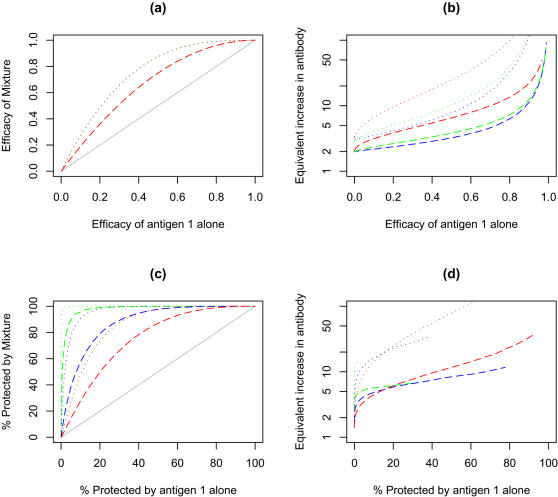Figure 3. Effect of the diversity of immune response on efficacy and percentage of the population protected by two component (dashed lines) and three component vaccines (dotted lines) for vaccines using the same model parameters as Fig. 2 where each component has the same average immunogenicity.
(a) The efficacy of a two or three component (grey solid line) as a function of the average efficacy of single component vaccines. Diversity of the immune response has no impact on the efficacy of the mixed vaccine so the curves for the three component vaccines (dotted upper lines) coincide as do the curves for the two component vaccines (dashed middle line). (b) Relative immunogenicity that would be needed with a single component vaccine to match the efficacy of a two or three component vaccine as a function of the average efficacy of single component vaccines. The relative immunogenicity is the ratio of the immune response required in a single component vaccine to the immune response of the best immunogen in a multi-component vaccine with similar efficacy (c) Comparison of the percentage of the population protected (relative risk of 0.1 or less) of a two or three component vaccine to the percentage protected with a single component vaccine (grey solid line) as a function of the percentage protected with single component vaccines of varying efficacy. (d) Relative immunogenicity that would be required with a single component vaccine to match the percentage protected with a multi-component vaccine as a function of the percentage protected with single component vaccines of varying efficacy. The relative immunogenicity can only be determined over the part of the range where <100% of the population given a mixed vaccine is protected.

